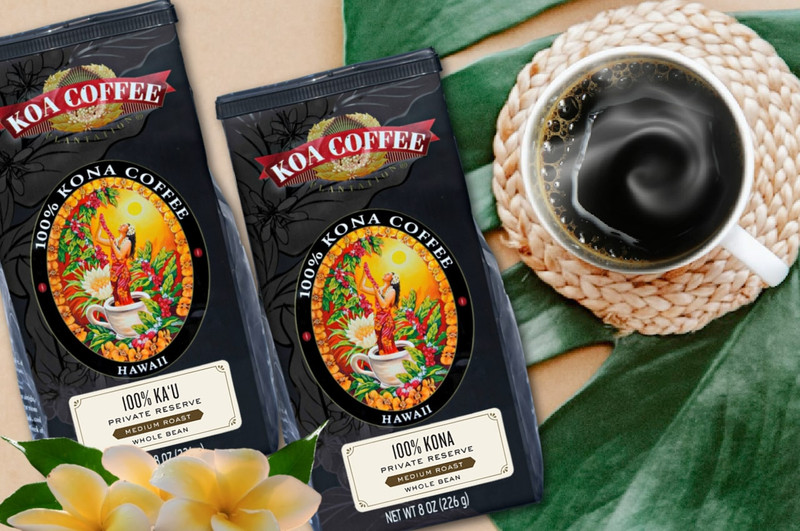If you've ever strolled through the coffee aisles at your grocery store, you might have come across Kau and Kona coffee, two prestigious Hawaiian coffees. Both are renowned for their unique flavors and are highly sought after by coffee connoisseurs worldwide. But what is the difference? Here, we’ll take a deeper dive to help you understand what sets these two varieties apart.
The Rich World of Hawaiian Coffee
Hawaii's rich volcanic soil and ideal climate create the perfect conditions for coffee cultivation, making Hawaiian coffee some of the most sought after in the world. Among the various regions known for producing exceptional coffee, Kau and Kona stand out as prime locales.
Kau Coffee: Unveiling a Hidden Gem
Kau coffee comes from the southeastern region of Hawaii's Big Island, an area with rich volcanic soil and ample rainfall, providing an excellent environment for coffee growing. Despite its exceptional quality, Kau coffee remains relatively unknown compared to its more famous counterpart, Kona coffee.
Kau coffee is distinguished by its unique flavor profile, often described as smooth, rich, and full-bodied with hints of floral and fruity notes. The beans grown in Kau are typically shade-grown, which contributes to their well-balanced taste.
Kona Coffee: The Legend of Hawaiian Coffee
Kona coffee hails from the slopes of the Mauna Loa volcano in the Kona district, located on the western side of the Big Island. Kona coffee has a long-standing reputation for its exceptional quality and unique taste, earning its place among the world's most sought-after coffees.
Kona coffee is known for its smooth, mellow flavor, often characterized by its low acidity and subtle sweetness. The beans grown in this region benefit from a combination of rich volcanic soil, sunny mornings, and afternoon cloud cover, creating the perfect conditions for optimal flavor development.
Deciphering the Differences
Now that we've explored the origins and flavor profiles of Kau and Kona coffee, let's delve deeper into the differences between these two Hawaiian coffee varieties.
Origins
- Kau Coffee: Grown in the southeastern region of Hawaii's Big Island.
- Kona Coffee: Cultivated on the slopes of the Mauna Loa volcano in the Kona district.
Flavor Profile
- Kau Coffee: Smooth, rich, and full-bodied with floral and fruity notes.
- Kona Coffee: Smooth, mellow, low acidity, and subtle sweetness.
Making Your Choice
When it comes to choosing between Kau and Kona coffee, it ultimately boils down to personal preference. If you enjoy a smoother, milder cup with subtle sweetness, Kona coffee might be your ideal pick. On the other hand, if you're looking for a more robust, full-bodied flavor with floral and fruity undertones, Kau coffee could be the perfect choice for you.
In conclusion, whether you opt for the hidden gem of Kau coffee or the legendary status of Kona coffee, supporting local Hawaiian coffee producers is a wonderful way to savor the unique flavors of the islands while also contributing to the local economy.
So, the next time you sip your cup of Hawaiian coffee, whether it's Kau or Kona, remember that each variety carries with it a story of craftsmanship, dedication, and the spirit of aloha.
Remember, there's a world of flavor waiting to be explored in every sip of local Hawaiian coffee. Embrace the taste of the islands and savor the essence of aloha in every cup!
In summary, while both Kona and Ka’u coffees share the volcanic soil and tropical climate of Hawaii, they each have distinct flavor profiles. Kona is the classic choice, known for its complexity, while Ka’u is the hidden gem with its unique smoothness and delightful nuances. Whether you’re sipping Kona’s caramel tones or Ka’u’s floral whispers, both offer a taste of Hawaiian paradise

